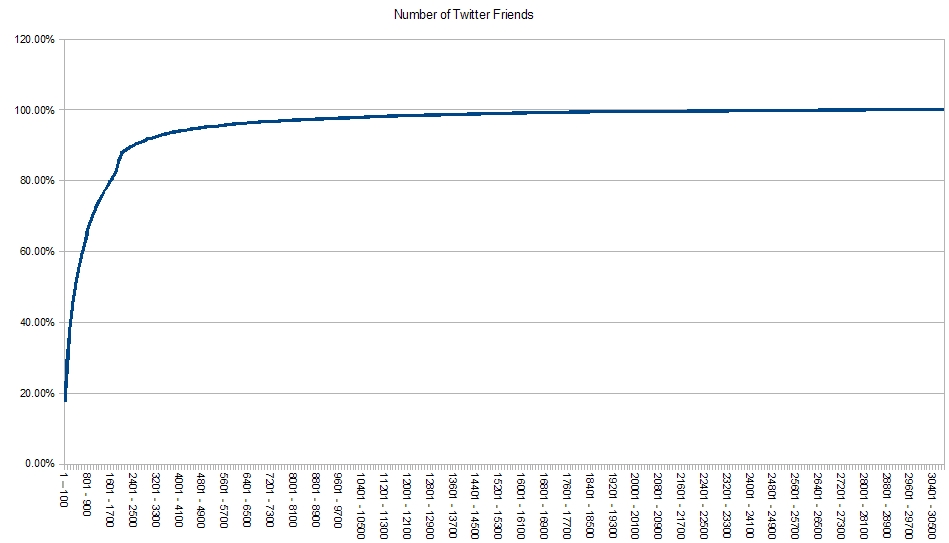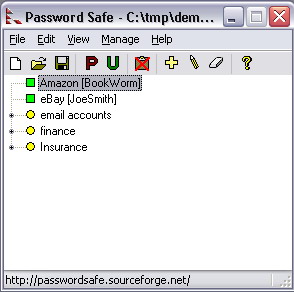Twitter Friend Averages: The Results
In developing my Twitter application, I decided that I needed to know how many users the average Twitter user follows. To accomplish this, I started a poll which was a pretty sad failure. Only 5 people responded and two of them were myself and my wife. However, all was not lost. As part of my Twitter application, I cache lists of who a user follows. (This helps reduce my impact on Twitter’s servers.) I checked and I had over 10,000 users’ information cached. So I wrote a quick script to query that information. The results were quite enlightening.
- 90.33% of users follow 2,600 people or less.
- 75.67% of users follow 1,400 people or less.
- 51.14% of users follow 500 people or less.
Using OpenOffice.org, I graphed the results and came up with this interesting chart:

As you can see, the percentage of users climbs sharply until around 2,500 followers. Then it levels off for a slow ascent to 100%. This really helps me. If I make my application cut off checking the Friends list at 2,000 people, it will handle the complete lists for 85% of users. I’m willing to have partial functionality for the top 15% of users (who are likely to not need my application as much) to preserve functionality for the bottom 85%.
If you’re interested in more data from this, let me know in the comments below and I’ll see what I can do.

 Security is important in today’s online world. A big part of that security is what password you use for the various websites you frequent. It is not uncommon for a person to have dozens of different sites, each with their own username and password. But how to you manage them all? Setting all of your passwords to be the same (e.g. "12345") isn’t safe. (I have the same combination on my luggage!) After all, if someone guesses *one* of your passwords, *all* of your accounts will be compromised. Writing them on paper and sticking it to your monitor isn’t very safe either. Anyone passing by your office/cubicle could see the list and gain access to your accounts. So what should the security conscious web surfer do? Why, put them in a safe of course! No, not a fire-proof safe (though that might be a good hard-copy backup method), but inside an application called (appropriately enough)
Security is important in today’s online world. A big part of that security is what password you use for the various websites you frequent. It is not uncommon for a person to have dozens of different sites, each with their own username and password. But how to you manage them all? Setting all of your passwords to be the same (e.g. "12345") isn’t safe. (I have the same combination on my luggage!) After all, if someone guesses *one* of your passwords, *all* of your accounts will be compromised. Writing them on paper and sticking it to your monitor isn’t very safe either. Anyone passing by your office/cubicle could see the list and gain access to your accounts. So what should the security conscious web surfer do? Why, put them in a safe of course! No, not a fire-proof safe (though that might be a good hard-copy backup method), but inside an application called (appropriately enough)